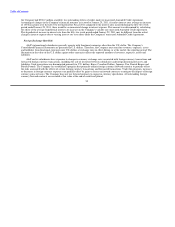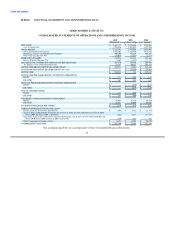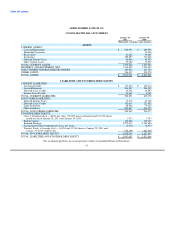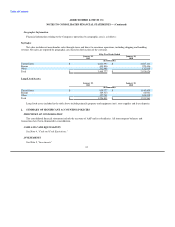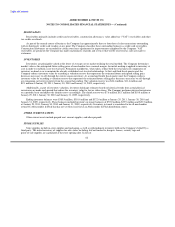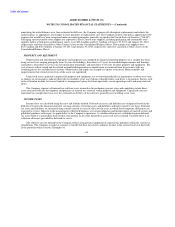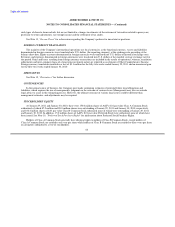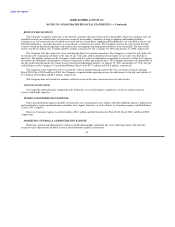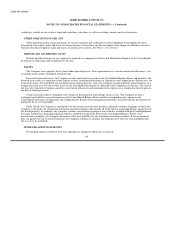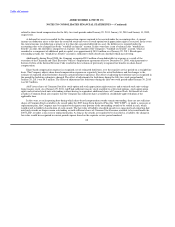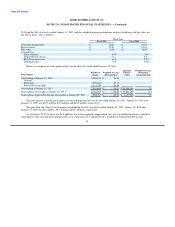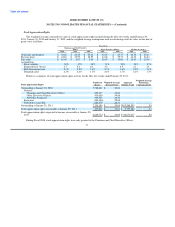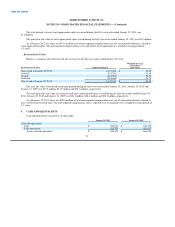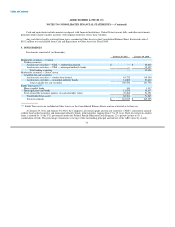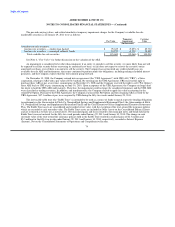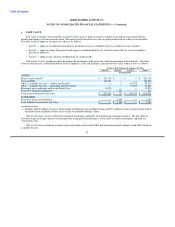Abercrombie & Fitch 2010 Annual Report Download - page 68
Download and view the complete annual report
Please find page 68 of the 2010 Abercrombie & Fitch annual report below. You can navigate through the pages in the report by either clicking on the pages listed below, or by using the keyword search tool below to find specific information within the annual report.
Table of Contents
ABERCROMBIE & FITCH CO.
NOTES TO CONSOLIDATED FINANCIAL STATEMENTS — (Continued)
REVENUE RECOGNITION
The Company recognizes retail sales at the time the customer takes possession of the merchandise. Direct-to-consumer sales are
recorded based on an estimated date for customer receipt of merchandise. Amounts relating to shipping and handling billed to
customers in a sale transaction are classified as revenue and the related direct shipping and handling costs are classified as Stores and
Distribution Expense. Associate discounts are classified as a reduction of revenue. The Company reserves for sales returns through
estimates based on historical experience and various other assumptions that management believes to be reasonable. The sales return
reserve was $16.8 million, $11.7 million and $9.1 million at January 29, 2011, January 30, 2010 and January 31, 2009, respectively.
The Company sells gift cards in its stores and through direct-to-consumer operations. The Company accounts for gift cards sold
to customers by recognizing a liability at the time of sale. Gift cards sold to customers do not expire or lose value over periods of
inactivity. The liability remains on the Company's books until the earlier of redemption (recognized as revenue) or when the Company
determines the likelihood of redemption is remote (recognized as other operating income). The Company determines the probability of
the gift card being redeemed to be remote based on historical redemption patterns. At January 29, 2011 and January 30, 2010, the gift
card liabilities on the Company's Consolidated Balance Sheets were $47.1 million and $49.8 million, respectively.
The Company is not required by law to escheat the value of unredeemed gift cards to the states in which it operates. During
Fiscal 2010, Fiscal 2009 and Fiscal 2008, the Company recognized other operating income for adjustments to the gift card liability of
$7.8 million, $9.0 million and $8.2 million, respectively.
The Company does not include tax amounts collected as part of the sales transaction in its net sales results.
COST OF GOODS SOLD
Cost of goods sold is primarily comprised of the following: cost of merchandise, markdowns, inventory shrink, valuation
reserves and freight expenses.
STORES AND DISTRIBUTION EXPENSE
Stores and distribution expense includes store payroll, store management, rent, utilities and other landlord expenses, depreciation
and amortization, repairs and maintenance and other store support functions, as well as Direct-to-Consumer expense and Distribution
Center ("DC") expense.
Direct-to-Consumer expense was $64.8 million, $50.1 million and $60.0 million for Fiscal 2010, Fiscal 2009, and Fiscal 2008,
respectively.
MARKETING, GENERAL & ADMINISTRATIVE EXPENSE
Marketing, general and administrative expense includes photography and media ads; store marketing; home office payroll,
except for those departments included in stores and distribution expense; information
65


